I received a question via Twitter...
Do you know what kind of stone this is ?
There was the below photo attached to the tweet...
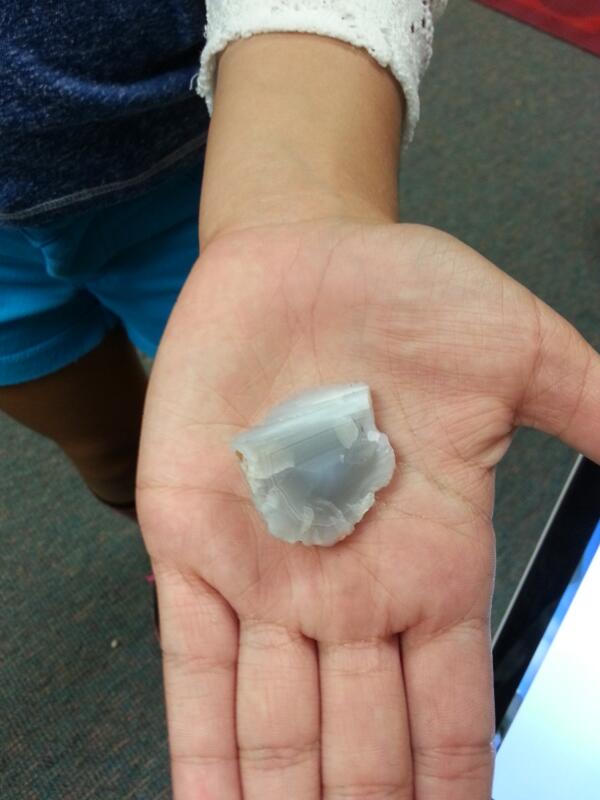
This photo was supplied by Mrs. Yollis and class.
I like a challenge and, although not always successful, finding an answer. I have an interest in geology but l find I know a little about many things but not a lot about anything. Without being able to hold the rock and look more closely, and without expertise, my first stop was to look more closely at the photo. Here's what I noticed...
The stone was white to bluish-grey.
Breaks around the edges looked a little like they might break off in flattened, sharp edged pieces.
There appears to be an inner border (lining) on the stone.
I wanted to see the border closer so I enlarged a section of the photo (below). I also enhanced contrast and colour a little.
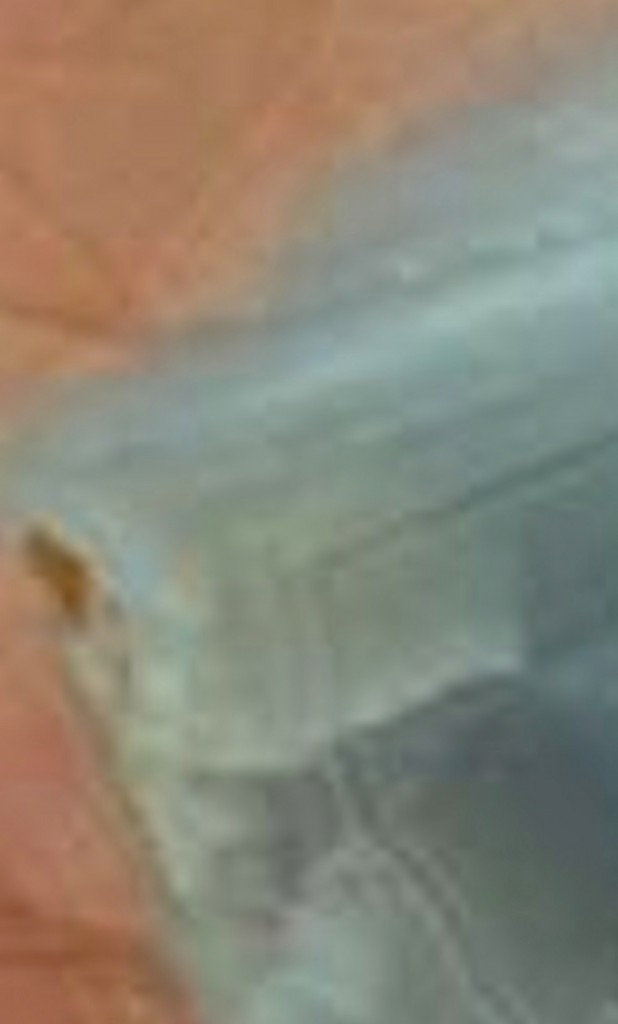
This photo was supplied by Mrs. Yollis and class.
I now noticed there seems to have been some fine layering around the edge of the stone up to the border. Layering can mean sedimentary rock but, it can also be a sign of a space in rock filling with crystals. I had seen something like this before. I probably have a few hundred small mineral samples in my collection so I started to search. Firstly, a display of stones I had used with classes over the years...
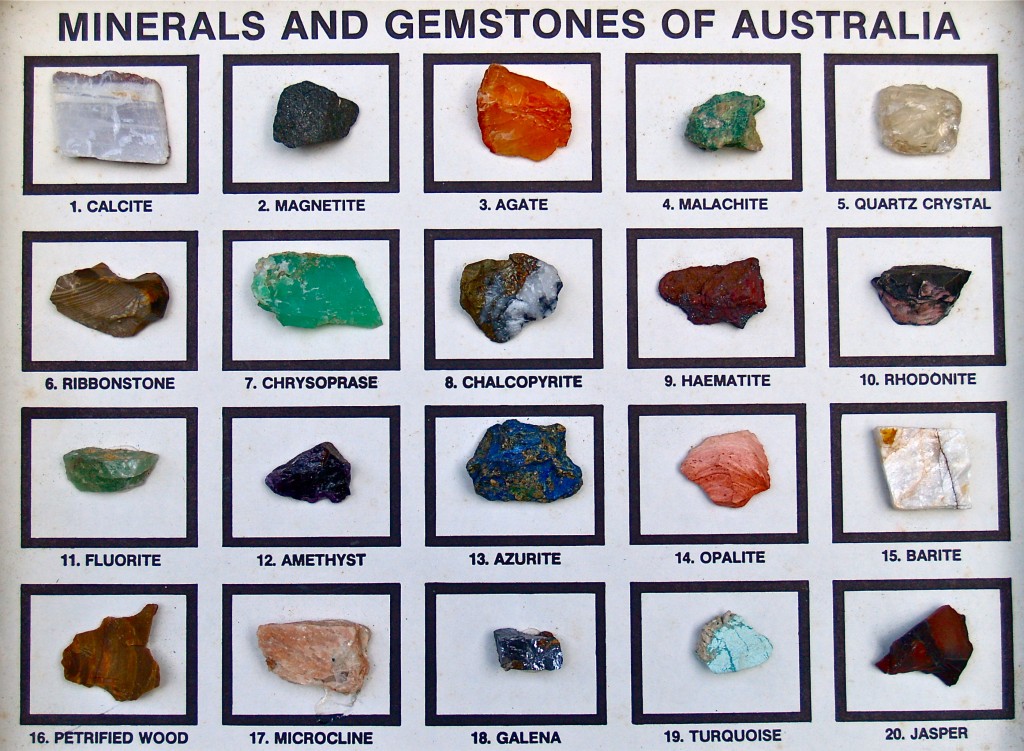
Schools and students have permission to use this graphic for non-commercial, educational purposes.
A few of these showed some of the features I was looking for, especially calcite, agate and quartz.

Schools and students have permission to use this graphic for non-commercial, educational purposes.
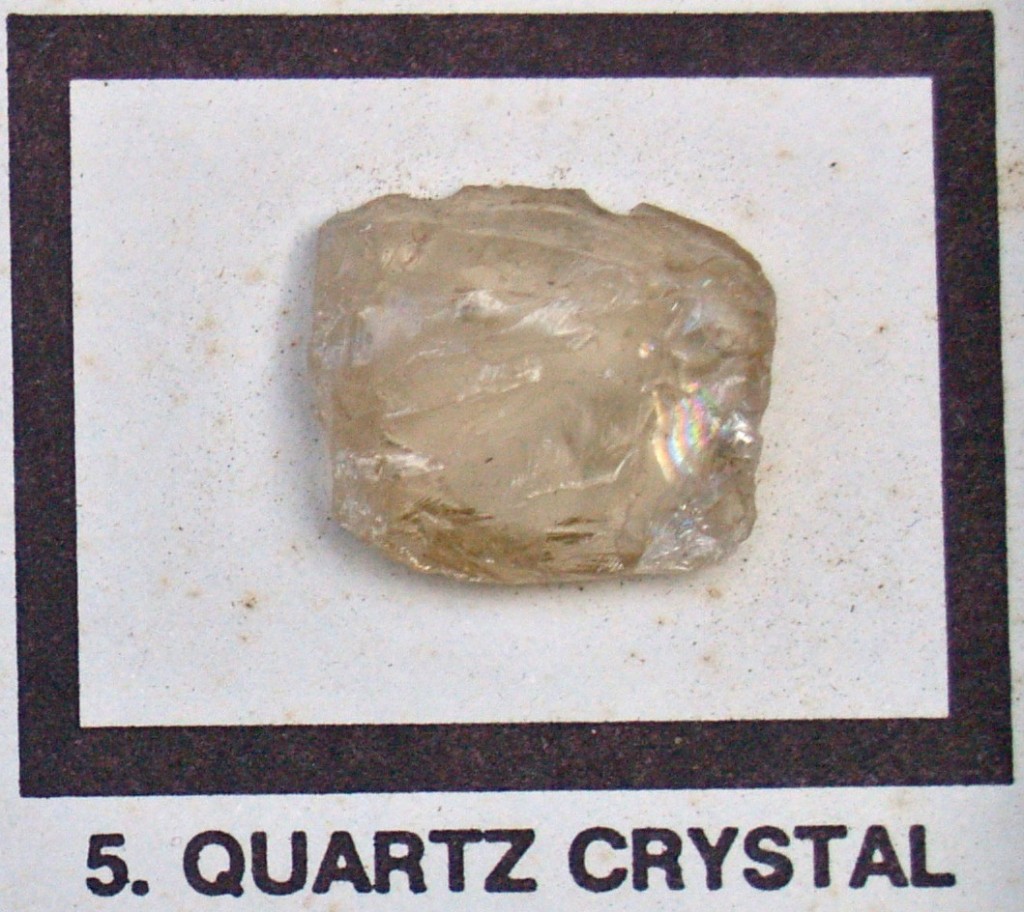
Schools and students have permission to use this graphic for non-commercial, educational purposes.

Schools and students have permission to use this graphic for non-commercial, educational purposes.
This reminded me of larger samples I had in my minerals database, I found items 41 and 46. They are listed as "Quartz - Chalcedony - Agate". They are examples of silicon oxide (SiO2).
The first sample has been cut and polished. The layering towards the outer edge is easy to see. There are small quartz crystals in the centre of the sample. I have seen this in other of my samples where inner spaces aren't completely filled. See geodes and the additional photos at the end of this post.
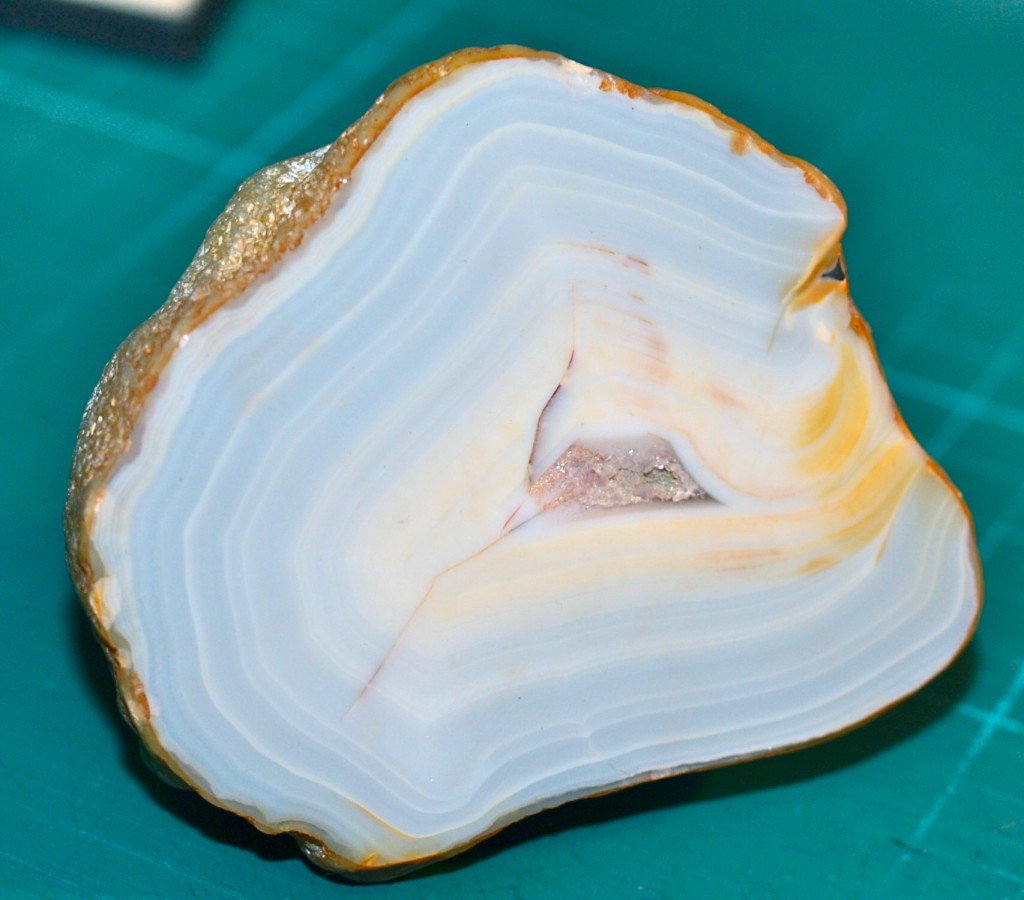
Schools and students have permission to use this graphic for non-commercial, educational purposes.
The second sample was a piece broken off a larger sample and only had a low sheen.
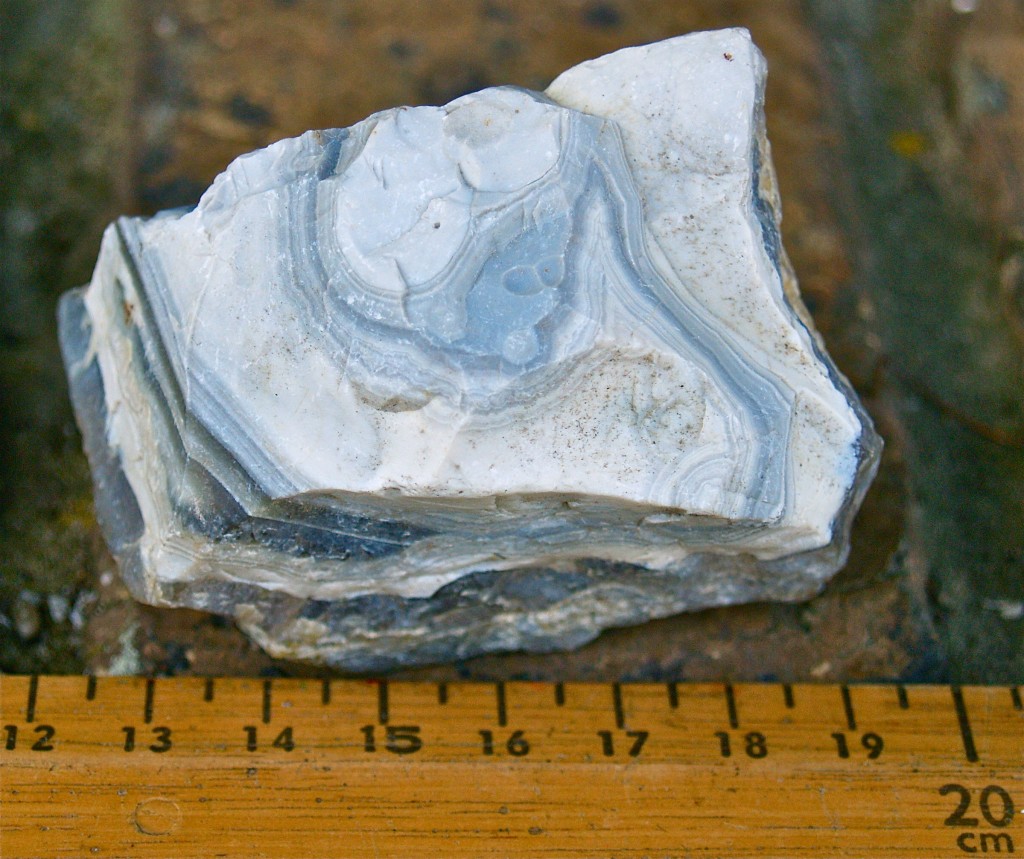
Schools and students have permission to use this graphic for non-commercial, educational purposes.
Without being able to hold and examine the sample in Mrs. Yollis's class, I suspect they have a sample of agate or chalcedony. Remember, I am only interested in geology and not an expert so I'm really only guessing.
How is it formed? My database explains it this way...
A concentric, banded, fibrous variety formed by precipitation from watery solutions in rounded cavities in lava rocks (geodes), sometimes with beautiful clusters of rock crystals or amethyst at the centre.
From my collection, below are photos of geodes. Most have been cut and one polished to show the interior.
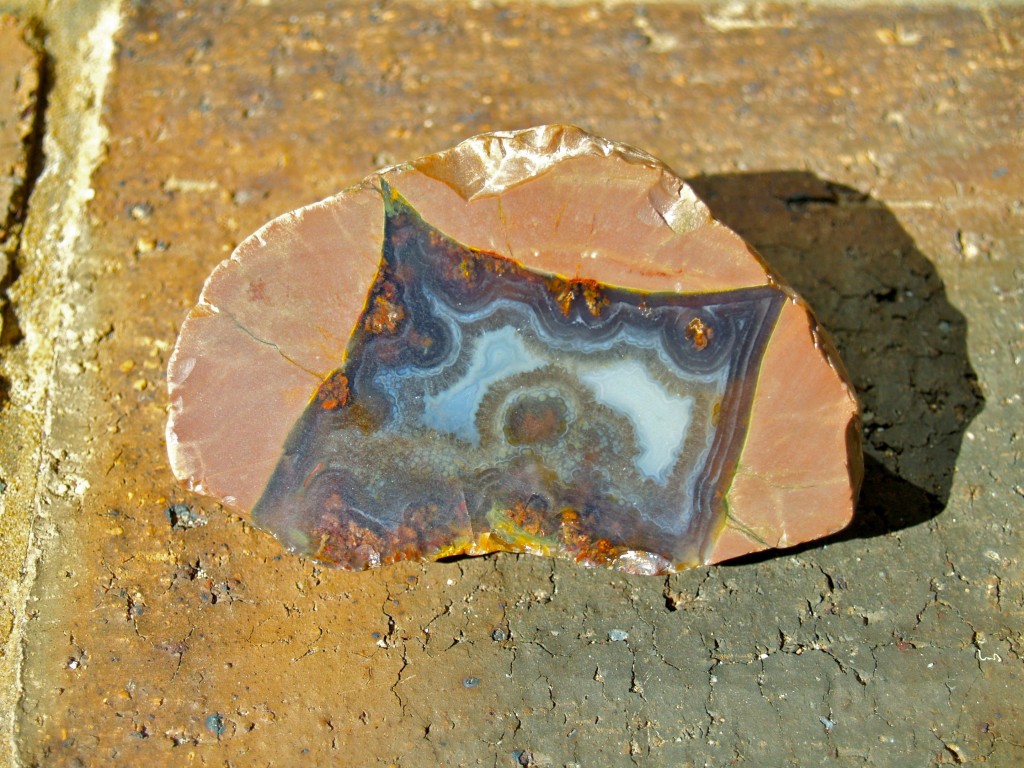
Schools and students have permission to use this graphic for non-commercial, educational purposes.
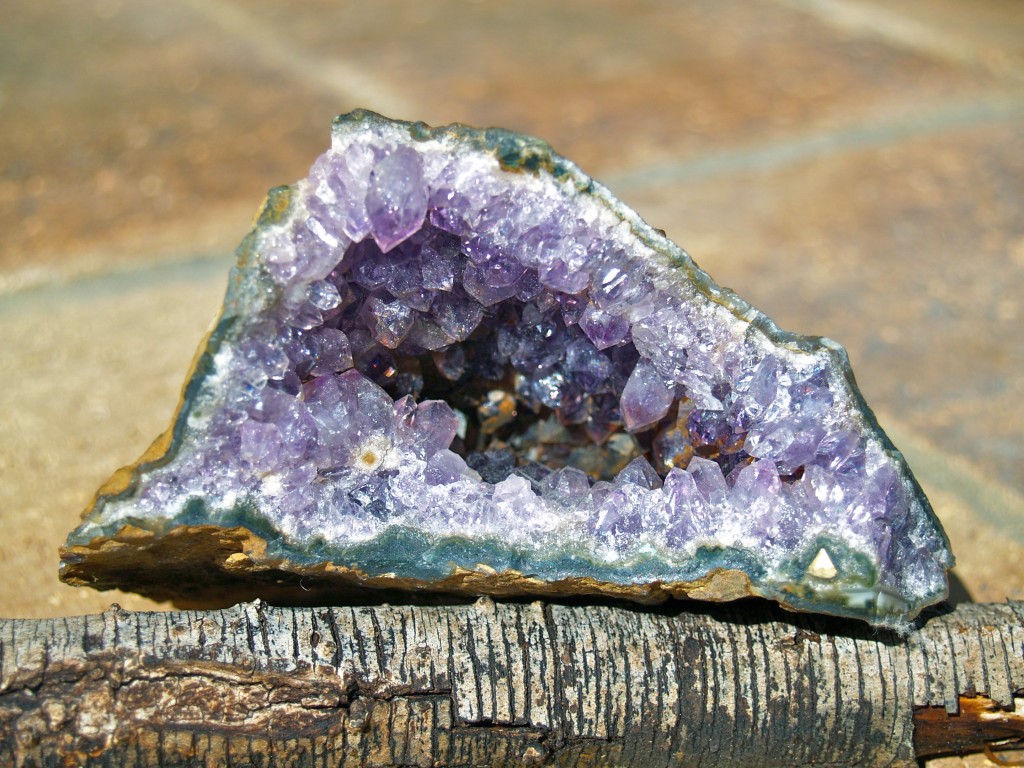
Schools and students have permission to use this graphic for non-commercial, educational purposes.
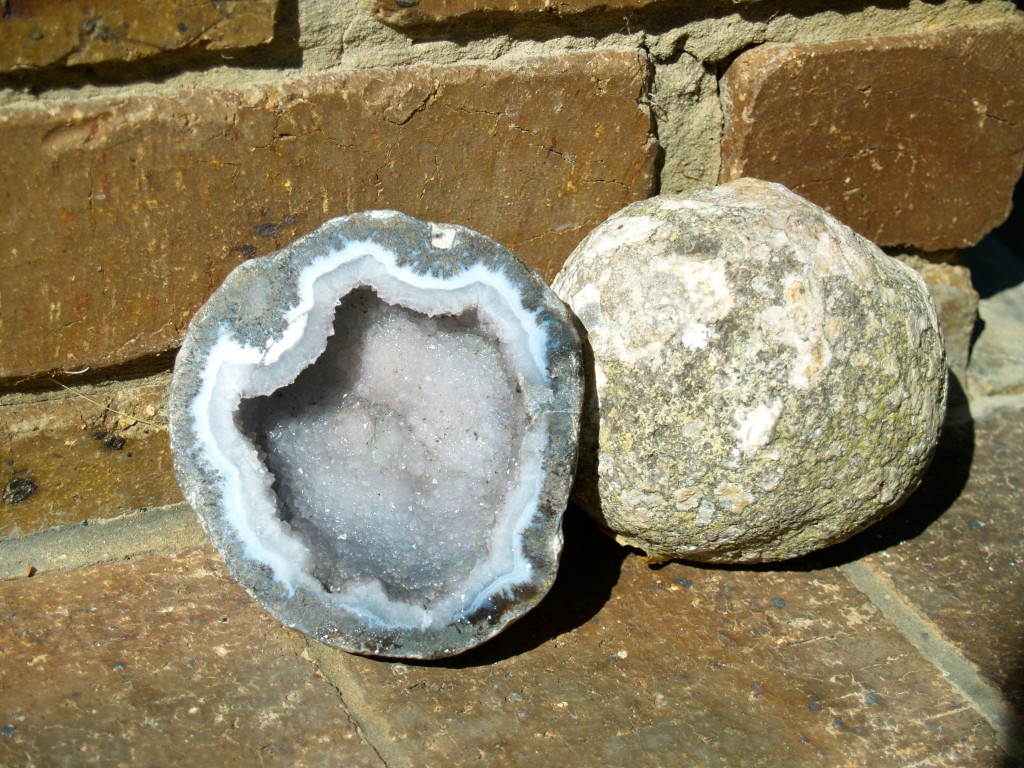
Schools and students have permission to use this graphic for non-commercial, educational purposes.
The last photo shows one cut sample and an uncut geode beside it. What's inside the uncut geode? I can tell you it is about the same size as the cut geode if it was whole. This means the uncut geode should be about twice the weight of the half but it is around three times the weight of the half. It may be solid or have a small central cavity. It could be very beautiful or possibly plain inside. We'll never know because I won't have it cut. I like a little mystery in the world. 🙂











